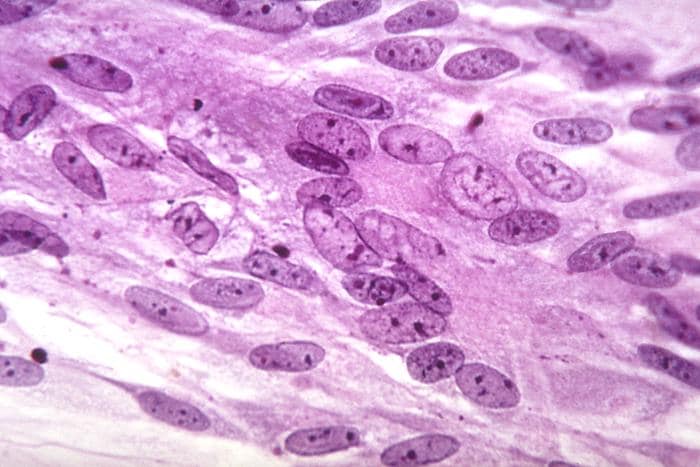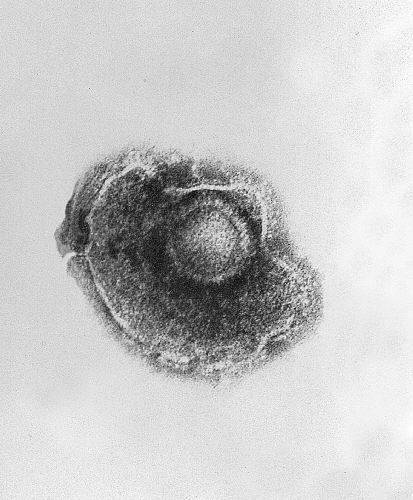Key points
- Varicella progresses rapidly from macular to papular to vesicular lesions before crusting.
- The most common chickenpox complications are bacterial infections of the skin and soft tissues in children and pneumonia in adults.
- Breakthrough varicella is often mild, so it can be difficult to make a diagnosis on clinical presentation alone.

Clinical features
Early symptoms
A mild prodrome of fever and malaise may occur 1 to 2 days before rash onset, particularly in adults. In children, the rash is often the first sign of disease.
Symptoms in unvaccinated patients
The rash is generalized and pruritic. It progresses rapidly from macular to papular to vesicular lesions before crusting. Lesions are typically present in all stages of development at the same time.
The rash usually appears on the chest, back, and face first, then spreads over the entire body. The lesions are usually most concentrated on the chest and back. Symptoms typically last 4 to 7 days.
In healthy children, varicella is generally mild, with an itchy rash, malaise, and temperature up to 102°F for 2 to 3 days. Infants, adolescents, adults, pregnant women, and immunocompromised people are at risk for more severe disease and have a higher incidence of complications.
Recovery from primary varicella infection usually provides immunity for life. In otherwise healthy people, a second occurrence of varicella is uncommon. The second occurrence of varicella may be more likely to occur in people with weakened immune systems.
As with other viral infections, re-exposure to natural (wild-type) varicella may lead to re-infection that boosts antibody titers without causing illness or detectable viremia.
Varicella Diagnosis Fact Sheet
Symptoms in vaccinated patients (breakthrough varicella)
Breakthrough varicella is infection with wild-type varicella-zoster virus (VZV) occurring in a vaccinated person more than 42 days after varicella vaccination.
Breakthrough varicella is usually mild. Patients typically are afebrile or have low fever and develop fewer than 50 skin lesions. They usually have a shorter illness compared to unvaccinated people who get varicella. The rash is more likely to be predominantly maculopapular rather than vesicular. However, 25% to 30% of people vaccinated with one dose who get breakthrough varicella will have clinical features similar to unvaccinated people with varicella.
Breakthrough Varicella Fact Sheet
How common is breakthrough varciella
Breakthrough varicella occurs less frequently among those who have received two doses of vaccine compared with those who have received only one dose. Disease may be even milder among two-dose vaccine recipients, although the information about this is limited.
Lab confirmation is key!
Complications
Most common complications from varicella:
Severe complications caused by the virus include cerebellar ataxia, encephalitis, viral pneumonia, and hemorrhagic conditions. Other severe complications are due to bacterial infections and include:
- Septicemia
- Toxic shock syndrome
- Necrotizing fasciitis
- Osteomyelitis
- Bacterial pneumonia
- Septic arthritis
Laboratory testing
Laboratory Testing for Varicella-Zoster Virus (VZV)
Specimen Collection for Varicella-Zoster Virus (VZV) Testing





